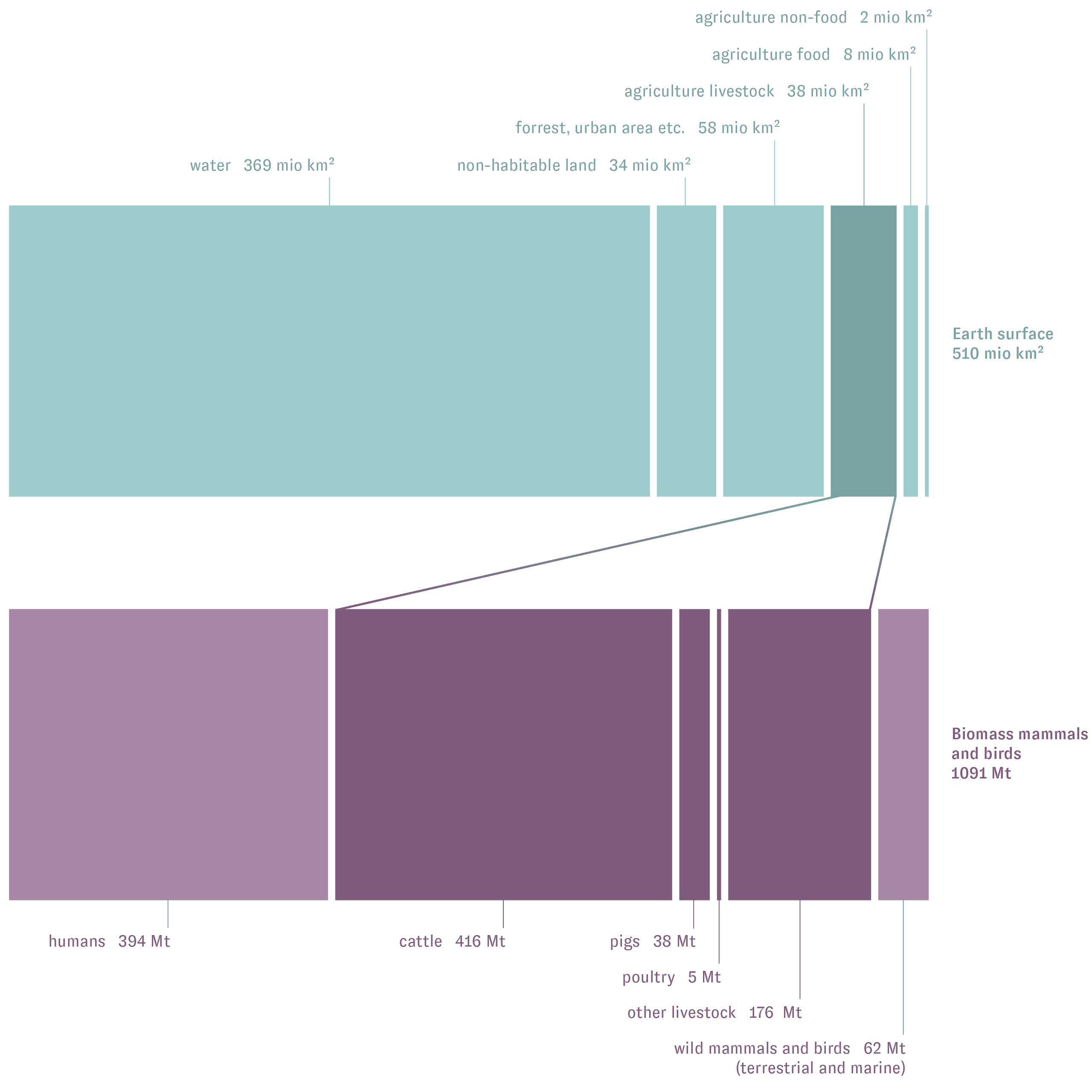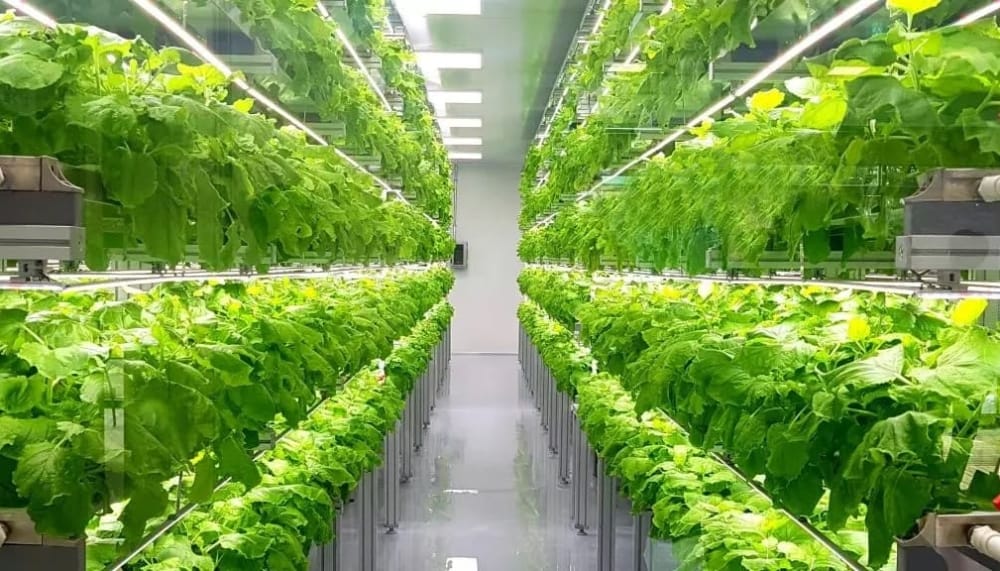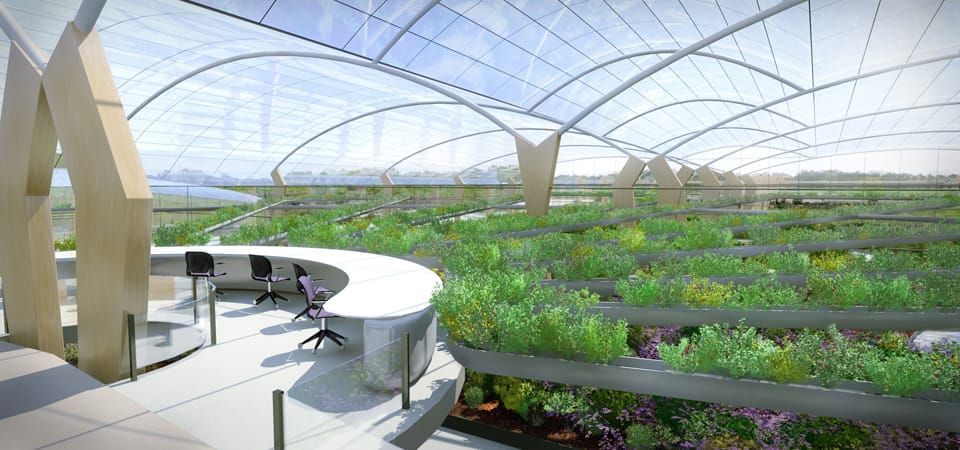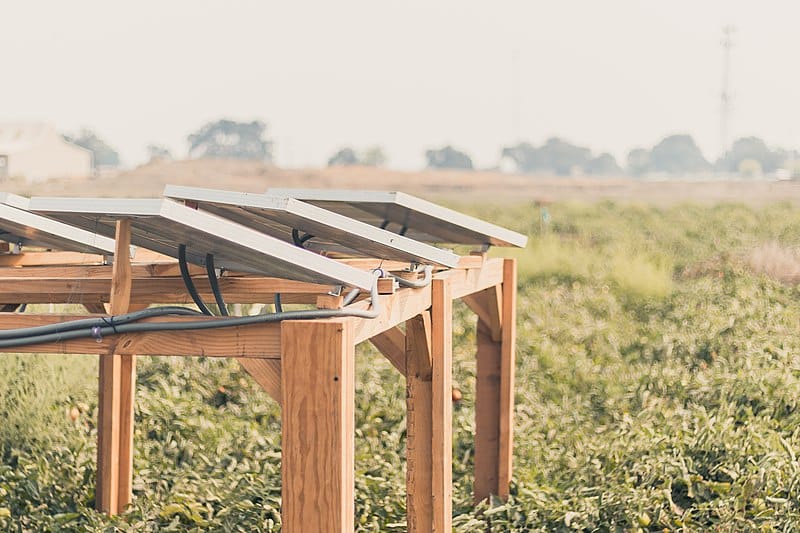Biomass and surface area
Current dimensions of agriculture: To supply the world with the current diet, around 4 billion hectares (40 million km²) of agricultural land are needed.
If the world went vegan, i.e. gave up animal products, around 3 billion hectares (30 million km²) could be freed up. The available land could be used to grow food of plant origin or be renaturalized. However, this prospect is difficult to realize worldwide. The demand for animal products is high, anchored in many cultures and associated with traditions. A sustainable approach to animal products is therefore all the more important.
Earth’s surface area and biomass

The surface area of the earth is 510 million km², of which 106 million km² is usable land. The agricultural area covers around 48 million km². Most of it (38 million km²) is used directly or indirectly for livestock farming. In comparison, only 8 million km² are used for food that is not related to livestock farming. Agriculture that is not used to produce food (e.g. plant-based fuels) takes place on 2 million km².
The biomass of all mammals and birds amounts to 1091 megatons (Mt). The mass of all people 394 Mt. The number of cattle clearly exceeds the mass of all other mammals. This can be explained by their generally very high weight, but the amount of livestock they keep is enormous. In comparison, there are only 62 Mt of wild mammals and birds, on land and in the sea. The majority of the world’s mammals and birds are used for livestock farming. (635 Mt)
Rethinking and optimizing
With the current food supply, it is urgently necessary to get more yield from already cultivated agricultural land. The focus on sustainability in livestock farming is also essential. Optimization is important in order to avoid claiming and destroying even more nature, thus preserving the natural habitat of flora and fauna. Alternative and innovative cultivation concepts can be used, but processing can also be aimed at the highest possible optimization in order to increase the yield from the same harvest quantity.
In our magazine, we have other articles that deal with the future of eating meat, food production and the sustainable use of food:
Thinking differently about agriculture is necessary in the future in order to maintain our living standards and at the same time take care of the planet. Food alternatives such as algae and a rethink on the consumption of animal products are future trends that have a concrete impact on the climate and our coexistence.
Sources:
https://ourworldindata.org/global-land-for-agricultur
https://www.pnas.org/doi/10.1073/pnas.1711842115
https://www.pnas.org/doi/epdf/10.1073/pnas.2204892120
https://www.pnas.org/doi/10.1073/pnas.2204892120#supplementary-materials
https://ourworldindata.org/land-use-diets
https://ourworldindata.org/agricultural-productivity-crucial





